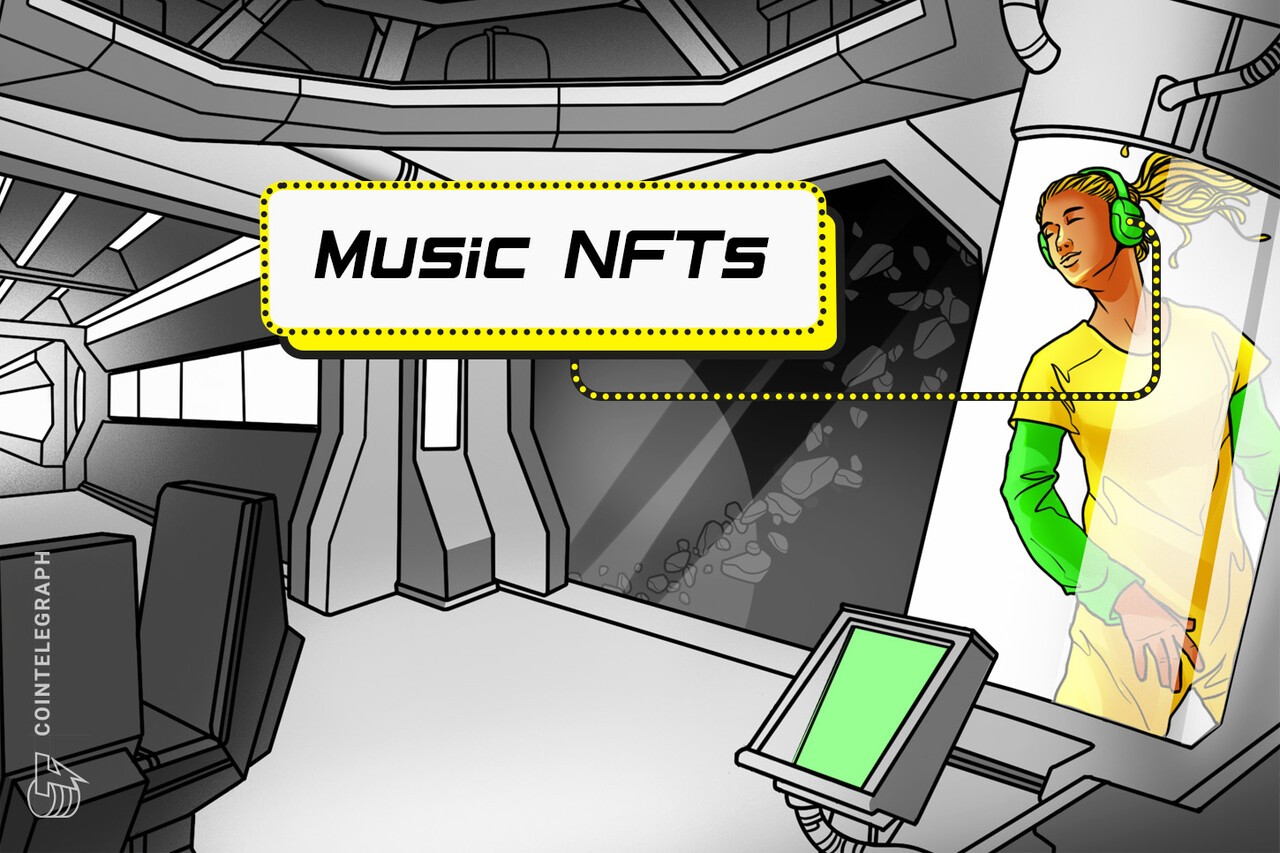The music industry is notoriously centralized, with major record labels often controlling nearly every facet of an artist’s career — from which songs they are allowed to release to what percentage of the royalties they keep and more.
While the rise of streaming platforms like SoundCloud and Spotify has helped democratize the industry and made it significantly easier to get one’s music in front of more ears, it’s still an uphill battle to build a dedicated fanbase and generate enough revenue to survive.
Enter music NFTs. For those in the blockchain space, nonfungible tokens represent an opportunity for fans to directly support their favorite artists, for musicians to build stronger communities with their listeners, and for content creators to build more substantial and sustainable income streams.
To better understand the topic, Cointelegraph’s new podcast The Agenda sat down with Adam Levy, host of Mint — a podcast exploring the Web3 creator economy — and Jay Kila, a crypto-native rapper based in Mumbai who founded OTP India — a digital-collectibles and fan-engagement platform for Indian hip hop artists.
What exactly are music NFTs?
Levy told The Agenda co-hosts Jonathan DeYoung and Ray Salmond that music NFTs generally fall under two categories. The first is ownership-based NFTs, which “are basically tied to IP [intellectual property] rights and royalties. So, when you buy the NFT, you now are entitled to the accrual of revenue that is produced from Web2 audio streaming platforms like Spotify, Apple Music, etc.”
The second is patronage-based NFTs, which do not grant holders any ownership rights but “are collected to support an artist.” According to Levy, “The upside of the NFT is sort of derived from appreciating secondary sales.”
“It really just comes down to tokenizing an audio file and being able to set that up out in the open market and find a collector buy that, engage with that, and join you and your journey as a creator in the music industry.”
How music NFTs are helping musicians
Jay Kila told The Agenda that he first became interested in music NFTs in early 2020 after most of his performance opportunities disappeared with the onset of the COVID-19 pandemic. He found it inspiring that this new technology offered a new way for artists to make a living that was an alternative to the traditional model. That’s when he founded OTP India with a friend of his.
“I just thought it was really cool that you could sell an NFT, and even if you sold it for $300, right, that’s more money than you’ll see from Spotify in like 10 years as an average artist,” he said. “Unless you’re getting millions of streams, it’s almost impossible to make a living from streaming.”
Spotify says it paid out $7 billion in royalties in 2021 alone, a figure the company claims “is the largest sum paid by one retailer to the music industry in one year in history.” But the vast majority of that money went directly to record labels and publishers, which collect enormous percentages for themselves before passing what’s left on to the artists. Plus, Spotify reportedly pays only $0.003 to $0.005 per stream, and major record labels negotiate higher payouts than independent artists receive.
Source: RAC
According to Jay Kila:
“NFTs are kind of like the last hope, I think, for independent artists to transition into this model where you can actually get money for your music in a much more direct way. It’s going to disrupt a lot of things.”
Building a relationship between artists and fans
One thing both Levy and Jay Kila wholeheartedly agree on is the power that music NFTs have to better connect creators directly with their fans. The Mint podcast itself practices what it promotes and issues free NFTs to its fans as a way to reward its loyal listeners, grow its audience and generate excitement.
“When I issue those free NFTs, there’s a ripple effect, and I get thousands upon thousands of hits to my website,” said Levy. “I get so many new subscribers, I get new listeners, and the ecosystem just kind of grows every single season.”
Related: NFTs are a game changer for independent artists and musicians
Jay Kila’s OTP project, meanwhile, seeks to build a Web3 community for the Indian hip hop scene centered around collectible digital trading cards, and it’s important for him that this community is accessible to everyone. “Each artist card we’re pricing at $27 because we wanted it to be affordable to the average person,” he said. “It’s not really about getting the money, but it’s about creating that bond between fan and artist, and then building the community.”
In the words of Levy:
“There’s never been a way for you to support an artist directly like you can through music NFTs and buying their collectible and being able to have aligned incentives with watching them grow as an artist as they develop over time.”
To learn more about music NFTs and how Levy and Jay Kila are using blockchain to build community and monetize content, tune into the full episode of The Agenda on Cointelegraph’s new podcasts page, Spotify, Apple Podcasts, Google Podcasts or TuneIn.
The Agenda is a new podcast from Cointelegraph that explores the promises of crypto, blockchain and Web3, and how regular people level up and improve their lives with technology. Be sure to check out Cointelegraph’s other new shows by heading over to the new Cointelegraph Podcast section.
This article is for general information purposes and is not intended to be and should not be taken as legal or investment advice. The views, thoughts, and opinions expressed here are the author’s alone and do not necessarily reflect or represent the views and opinions of Cointelegraph.


